My previous post about the financials of creator-owned comics in mainstream retail paints a pretty bleak picture. The risk is high for retailers, creators and publishers, profit margins are thin and making your new comic stand out in a crowded marketplace full of worldwide pop culture icons is an uphill battle at best.
All that is true, but there are some focused marketing options available for creators willing to pound the pavement and be extra social.
Comic shop retailers aren’t just managers of chain stores carrying the exact same selection of product from store to store. They’re small, focused boutique shops that reflect what sells in their area and the tastes of the people who run the shop. You’re not dealing with franchise brand managers or accountants, these are people who work in comic retail because they love comics and the printed page. They’re passionate about the medium. Having a personal connection to you and your creation gives retailers added incentive to hand sell your story to their customers. That crucial difference is a real advantage when you’re starting out if you’re willing to take the time to build relationships with like-minded retailers.
Before any of this outreach can happen you need to have a product coming out. Not just ideas or sketches, but an actual physical comic. The work has to be high quality and you need to be accessible. Retailers aren’t dealing in ‘vaporware’. They need to know what they’re getting and how they can sell it. If you don’t have physical copies of the comic in hand you’ll at least need some sort of sales sheet.
Here’s the sales sheet I did up for Skullkickers Treasure Trove. I’d include this with free copies of the comic or a poster when I approached retailers:
It covers all the major information on what it is, who might enjoy it, the product specs and overall format. It’s a bit dry but that’s the basic info retailers need.
Here’s a takeaway sheet I’d hand to people at conventions in 2011 if I sold out of books:
This one focused on the Diamond Previews ordering codes so people could show the sheet to their local comic shop and easily get back issues.
Nowadays I’ll have my tablet on hand pre-loaded with comic pages and cover artwork so I can easily show readers or retailers samples of my comic where ever I might be. If they’re enjoying that I may even show them our spiffy little promo video put together by Long Vo.
For completeness sake, here’s the new business card design I had printed for the upcoming 2013 convention season so I can easily entice new readers to try out the series after the show:
When people are at a convention they browse a lot but aren’t able to buy everything they might be interested in. This little giveaway card is an easy way for them to remember the title and follow-up. A missed sale at a show doesn’t have to be a completely lost customer.
Although there are over 1900 Diamond Distribution accounts ordering from the Previews catalogue each month, there are only a few hundred shops that consistently go out of their way to support new creator-owned material in a big way. When you’re creating something new and are trying to gain a foothold in the comic market it’s crucial that you build up contact with as many of those shops as possible, showing them that you put out quality work and are helping market and promote it.
Email is the most convenient option but, given how much digital correspondence we all get, it’s also the easiest to ignore. Going to shops in your area in person can work well, as can approaching shops at conventions. Politely phoning can work (but never on Tuesdays or Wednesdays because that’s when they’re organizing new releases and dealing with new comic day), just make sure you’re not a pest about it. This kind of cold call outreach is slow and most outlets are not going to be enthusiastic. Steel your nerves for lukewarm responses aplenty. It can be demoralizing at times but it is important.
Retailers are the front line for your work as far as traditional comics go. Their enthusiasm for your work can go a long way. The more they like you, like the work and understand what it’s all about the easier it will be for them to sell it to their regulars. Summing up the concept in a simple statement can go a long way here. This is why I have snappy sales pitches for Skullkickers like:
“Skullkickers is The Hobbit meets The Hangover.”
“Skullkickers is low brow high fantasy.”
or
“Skullkickers is about two mercenary monster mashers looking for fame and fortune.”
All of the above are simple and to the point. They’re the same way the retailer can pitch it to other people. I’m selling the concept to the retailer and giving them a quick way to sell it to their customers.
If you can get a small foothold at a handful of supportive stores, you can build on that word of mouth with advanced previews (I send water-marked advance PDFs to retailers on my mailing list), in-person signings and personalized sketches. That’s how independent creators like Colleen Doran, Eastman & Laird, Jeff Smith and Dave Sim did it in the 80’s/90’s and it’s still a valuable method for building an audience now in 2013.
The top end retailer incentive right now is probably the exclusive variant cover; a unique collectible version of a comic with a new cover and limited print run. You’re seeing more and more of these pop up lately, even from the Big Two, because they can really work well at grabbing customer attention. It’s a focused creative commitment from the creator and a big financial commitment from the retailer, creating a promotional bulwark for that title in a particular spot. If a retailer is willing to drop hundreds of dollars on a specialized comic like this they’re telling a creator they believe they can build a dedicated audience for the work. When print runs on even successful creator-owned comics are usually under 5000 copies, adding 500+ copies to that print run from just one outlet is a big deal. It’s leveraging the collectability and future success of that comic as a way to sell the variant for 3 or more times the regular cover price.
Probably the most consistent retailer variant promotion happening right now is the Phantom Variant. They’re a group of more than a dozen retailers who are teaming up with publishers and creators on exclusive cover variants in return for key placement in shops to help maximum exposure. I’ve worked with several of these shops doing signing events and exclusives and they’ve been a bedrock of enthusiastic support for Skullkickers, Makeshift Miracle and everything else I’m working on. When you go to one of their shops you can really see how committed they are to long term growth of creator-owned comics. They’re actively looking for other professional creators to support and are easy to get in contact with.
A great comic shop or convention that gets behind your work can make up for the short fall from dozens of other outlets that aren’t ordering any copies at all. It’s about building relationships and support, bit by bit. In a comic market crammed with more products and ideas than ever before you need to pay more attention, be more approachable and think like a retailer to build an audience through traditional sales channels.
If you found this post helpful, please let me know here (or on Twitter) and share the post with your friends. Please consider buying some of my comics online, from your local retailer or from me in person if you see me at a convention.

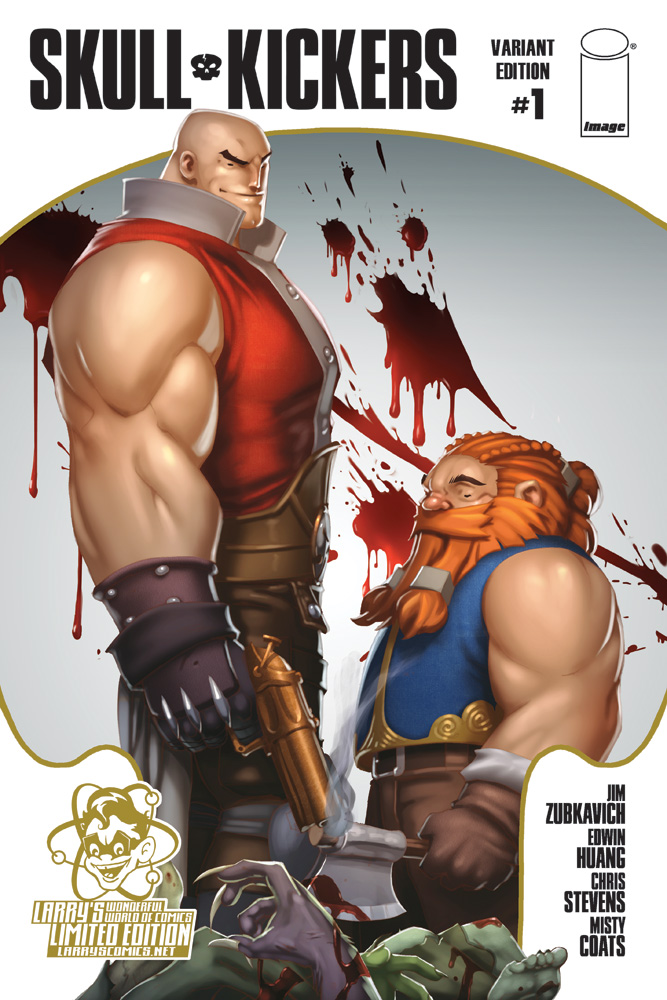 Skullkickers #1 Larry’s Comics Exclusive Cover
Skullkickers #1 Larry’s Comics Exclusive Cover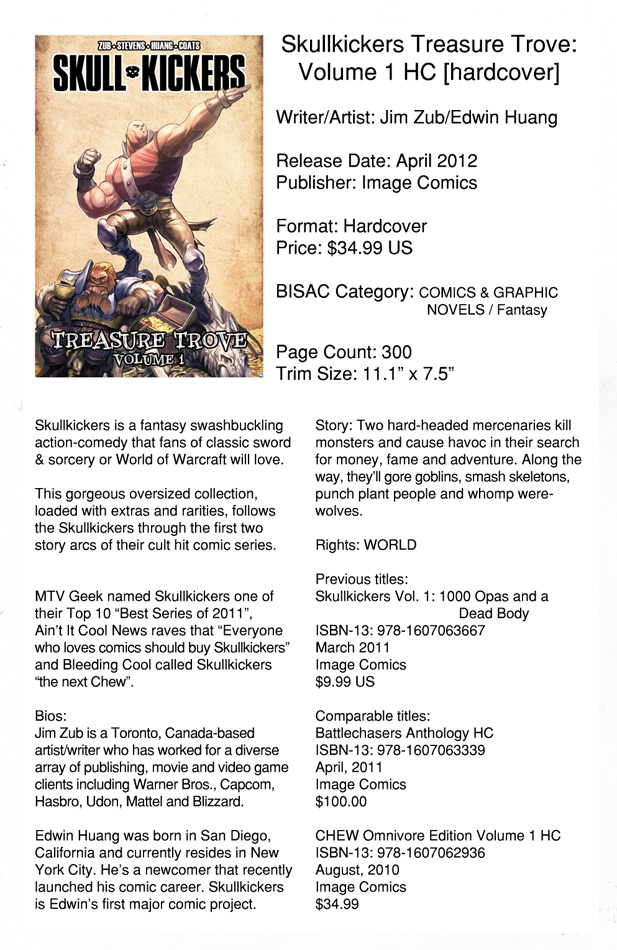
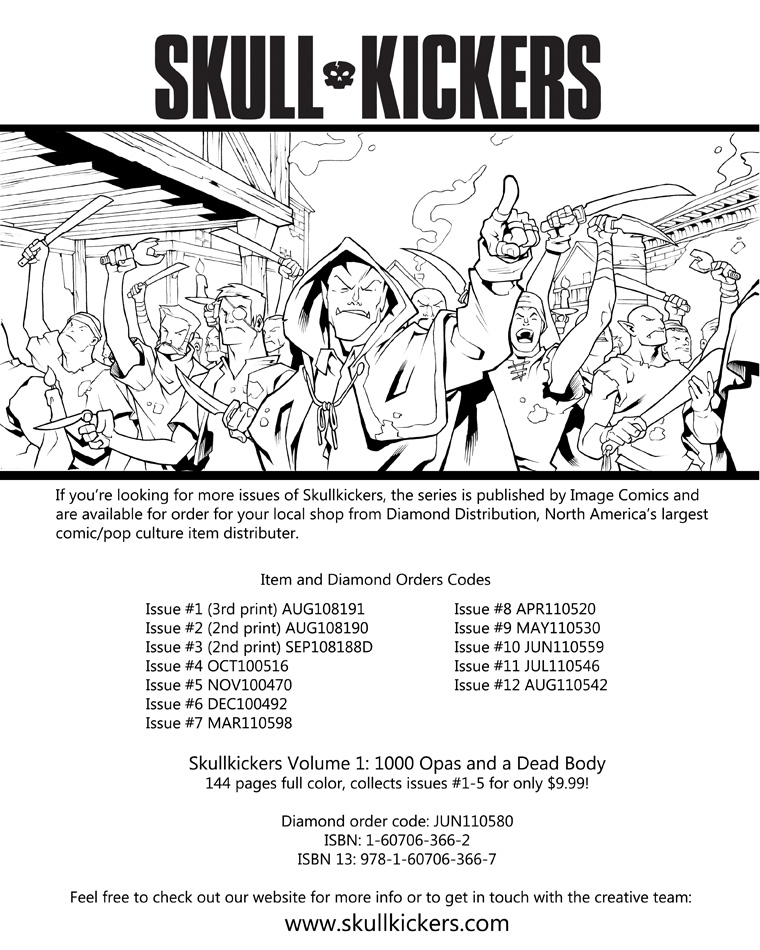
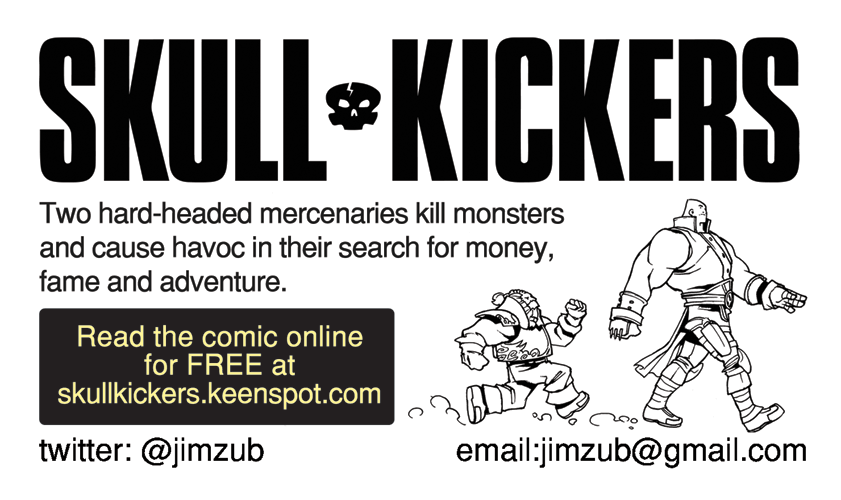
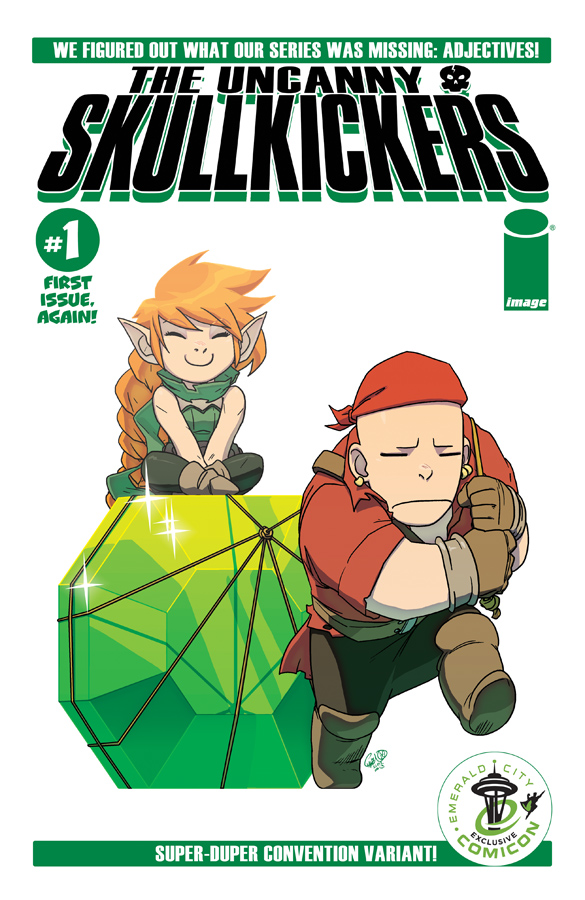 Our upcoming Uncanny Skullkickers #1 exclusive for Emerald City Comicon
Our upcoming Uncanny Skullkickers #1 exclusive for Emerald City Comicon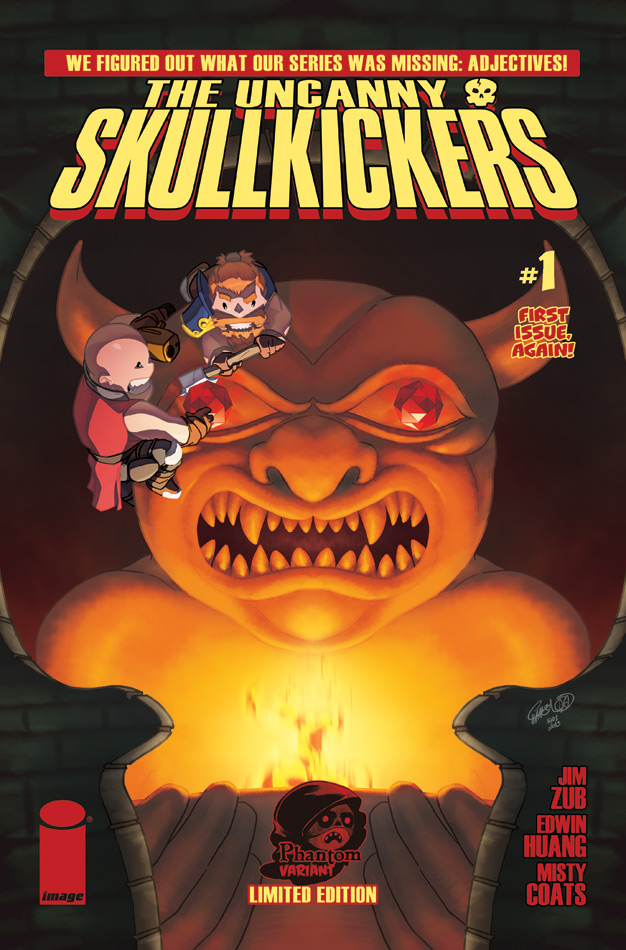
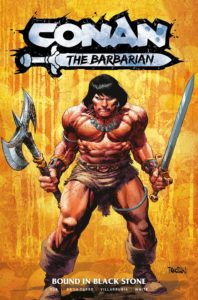


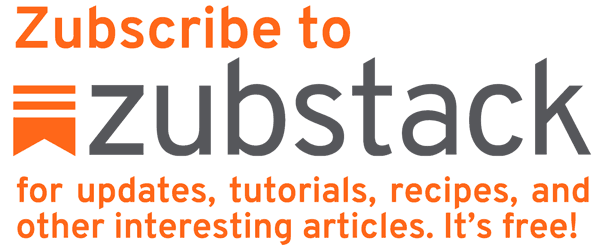
 Zub on Amazon
Zub on Amazon Zub on Instagram
Zub on Instagram Zub on Twitter
Zub on Twitter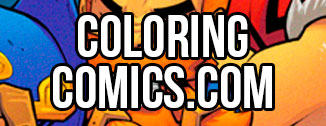
1 Comments.